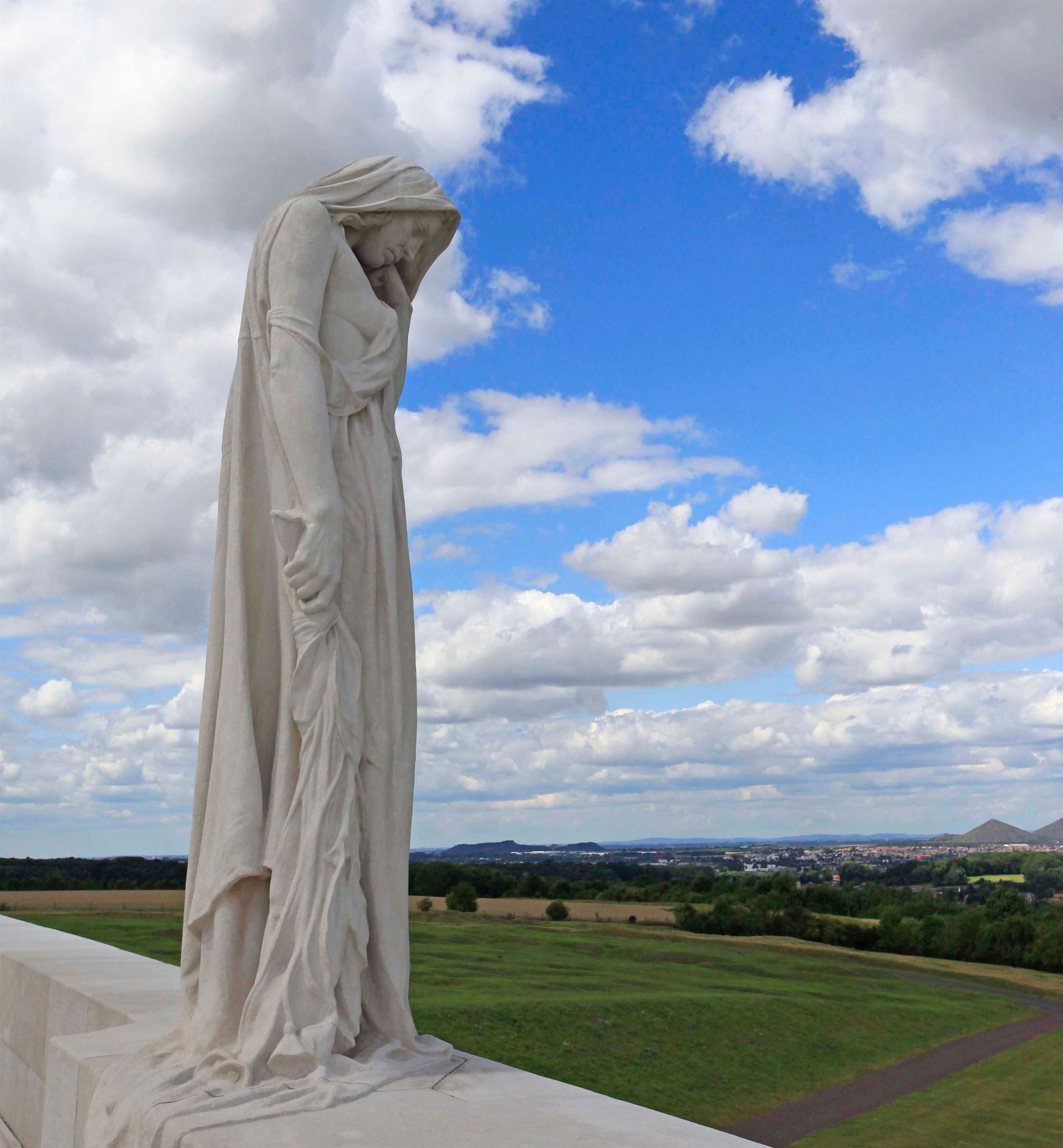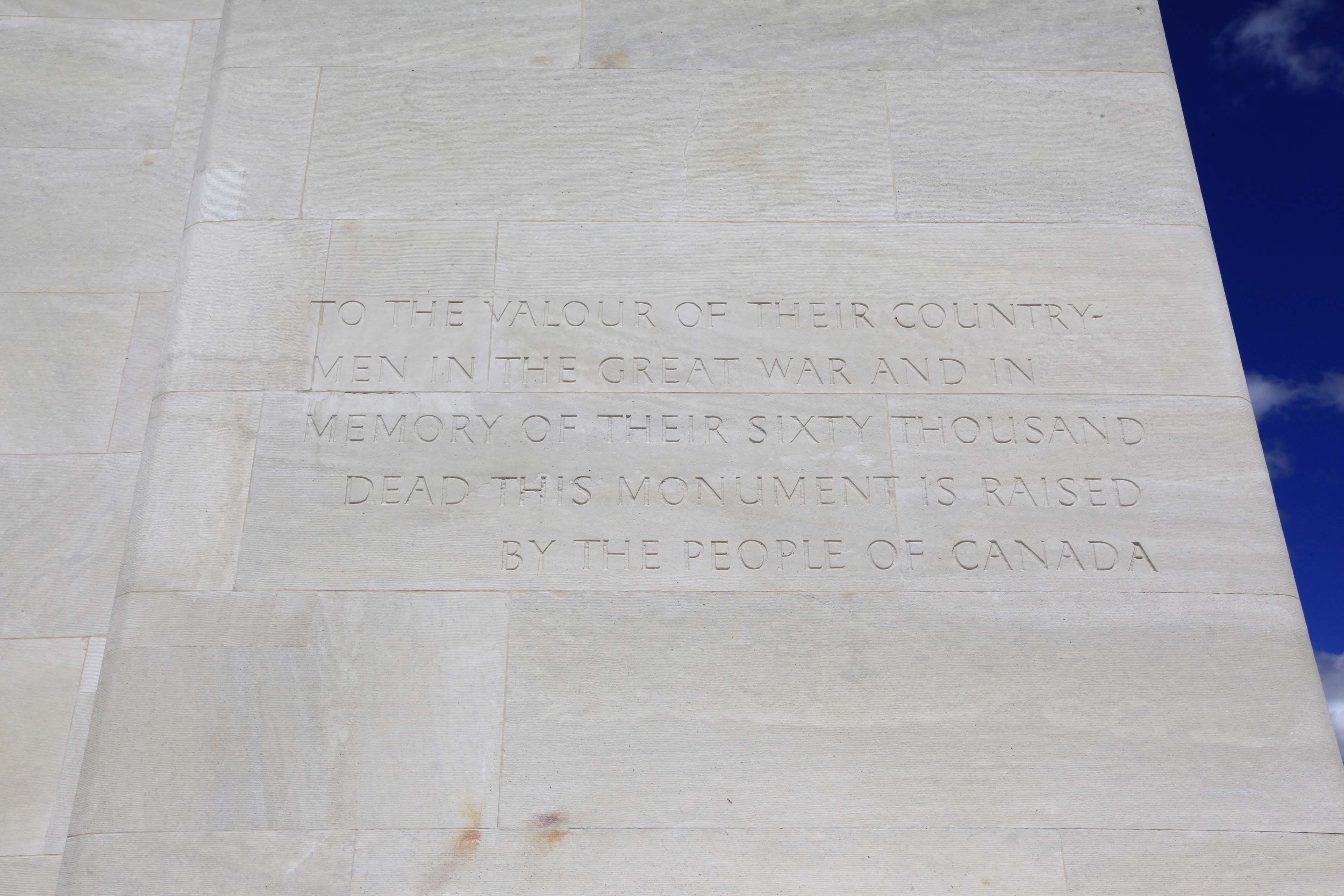About the Memorial: A Nation Grieves
Less than 50 years after Confederation, the First World War profoundly impacted the young nation of Canada. From a population of under 8 million, some 619,000 Canadians enlisted in the Canadian Expeditionary Force for service overseas. Sadly, more than 66,000 did not return home and another 172,000 were wounded.
Did you know?
- Vimy Ridge was a memorial long before the current Canadian National Vimy Memorial was built.
- The same sense of sorrow and obligation that prompted creation of the monument we see today, often inspired the military to build memorials right where Canadians fell or close to important captures and targets.
View images of early Vimy Ridge memorials in our photo gallery.
Canada Mourns
Following the war, families and communities around the world mourned the loss of so many young lives and soon turned their attention to honouring those who served. Led by prominent figures like General Arthur Currie and Brigadier-General H.T. Hughes, efforts to identify which Canadian engagements should be recognized with memorials in Europe began as early as February 1919. On September 2, 1920, the Canadian Battlefields Memorials Commission was established to oversee creation of eight Canadian battlefield memorials in France and Belgium. Beginning with a design competition, the Commission was also responsible to manage land acquisition and construction.
The most impressive of the resulting memorials is the majestic and inspiring Canadian National Vimy Memorial. Built at the highest point of Vimy Ridge, it not only marks the site of a significant and historic event—it stands as a tribute to all Canadians who served during the First World War, particularly those killed in France whose final resting place was unknown.
An Inspired Concept
Canada Bereft Statue
Designed by Canadian sculptor and architect Walter Seymour Allward, the Canadian National Vimy Memorial took eleven years to build. It rests on a bed of 11,000 tonnes of concrete, reinforced with hundreds of tonnes of steel. Its towering pylons and sculptured figures contain almost 6,000 tonnes of limestone brought to the site from an abandoned Roman quarry on the Adriatic Sea (in present day Croatia).
Twenty sculpted, symbolic figures grace the monument, each carved where they now stand from huge blocks of limestone. The largest, a mourning figure known as Canada Bereft, was carved from a single 30-tonne block. Head bowed in sorrow, she provides a powerful representation of Canada, a young nation grieving her dead. Overlooking the Douai Plain, she gazes down upon a symbolic tomb draped in laurel branches and bearing a helmet and sword.
Carved on the walls of the monument are the names of 11,285 Canadian soldiers who were killed in France and whose final resting place was then unknown.
Inscription
At the base of the Memorial, these words appear in French and in English:
TO THE VALOUR OF THEIR COUNTRYMEN IN THE GREAT WAR AND IN MEMORY OF THEIR SIXTY THOUSAND DEAD THIS MONUMENT IS RAISED BY THE PEOPLE OF CANADA
Inscription on monument
Learn more about the Canadian National Vimy Memorial’s design and construction.
- Date modified:

